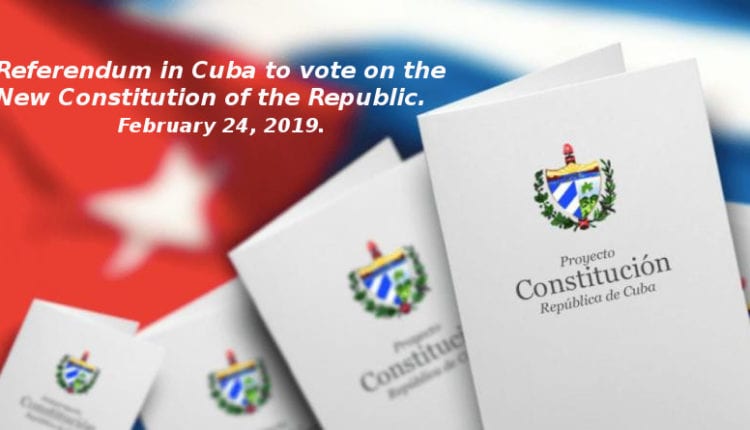A Country’s Constitution Should Be a Reflection of its Historic Moment
Elio Delgado Legon
 HAVANA TIMES – The history of Cuban Constitutions is a history of the different eras we Cubans have lived through, from the first Constitution belonging to the Republic in arms, passed in Guaimaro on April 10, 1869, just six months after the beginning of the Revolution against Spanish domination.
HAVANA TIMES – The history of Cuban Constitutions is a history of the different eras we Cubans have lived through, from the first Constitution belonging to the Republic in arms, passed in Guaimaro on April 10, 1869, just six months after the beginning of the Revolution against Spanish domination.
The second Constitution was written up in Baragua, after General Antonio Maceo’s manly protest against the pact signed by some of the rebel forces with representatives of the Spain in Cuba. This Constitution would only be in force for 74 days, as it was impossible to uphold in times of war.
In 1895, when the armed struggle against Spanish domination picked up again, with the war organized by Jose Marti, a third Constitution was promulgated, signed in Jimaguayu. It remained in force until 1897, when the “La Yaya” Constitution was drafted, which would be the last one during times of rebellion against Spanish domination.
When Spain had almost been defeated, US intervention in 1898 thwarted our efforts for total independence, which had beared a heavy cost in pain and blood for the Cuban people.
The 1901 Constitution was written under US occupation, which was conceived with its hands tied behind its back. And, even when many constitutional committee members didn’t want to pass it with the ammendment imposed by the US (known as the Platt Amendment), political blackmail swooped in and the constitution was passed with this ammendment or US troops wouldn’t leave the island.
So, the first Constitution of the pseudo-Republican era was passed under these circumstances, with the country occupied by foreign military forces, and as you would expect, it answered to the sad historic moment our country was living.
As the years passed by and a parade of governments bowing down to US Imperialism’s plans came and went, including Gerardo Machado’s bloody dictatorship, the historic conditions were set for a new Constitution to be drafted (without the Platt Ammendment this time), which was promulgated in 1940.
The 1940 Constitution was very progressive in nature for its time, because of the social scope of concepts it introduced. However, its progressive laws were never abided by, as the people responsible for approving laws and complimentary provisions only answered to the interests of the bourgeoisie and landowners, many of which were US companies who thought themselves “untouchable”.
When Fulgencio Batista’s bloody dictatorship began on March 10, 1952, the Constitution was filed away and the country began to be governed using the so-called Constitutional Statutes, which were nothing more than a series of laws that justified the violation of Law that had been instituted. This situation led the Cuban people to take up arms again to finally get the Republic they wanted for everyone and for the wellbeing of everyone, which Jose Marti and subsequent generations had fought for.
When the Cuban Revolution triumphed on January 1, 1959, the 1959 Fundamental Law was written up to begin to put the country back into order and institutionalize it, taking many articles from the 1940 Constitution. However, as the country organized itself, it became necessary to write up a new Constitution, which was written in collaboration with the people and then held to a referendum vote on February 24, 1976, obtaining 97% of the vote, as it responded to the historic moment at that time.
After 42 years of our country in Revolutioon, many things have changed, both in terms of the economy and society. Experience has shown that many points in the 1976 Constitution needed to be changed and last year, 2018, a constitutional reforms process began, drafting up a new Constitution, with the participation of the Cuban people. The result has been a new Constitution that truly answers to the historic moment we are living, and it will be subjected to a referendum on February 24th, a historic date which marks when independence struggles picked up again in 1875, which were interrupted in 1878 with the Zanjon Pact.
Reading the first article of this new Constitution is enough for us to realize that it does in fact respond to the historic moment our country is living, as it states the following:
“Cuba is a socialist State of law, democratic, independent and sovereign, organized with and for the good of all, as a unitary and indivisible republic, founded on the work, dignity and ethics of its citizens, whose essential objectives are the enjoyment of freedom, equity, social equality, solidarity, well-being and individual and collective prosperity.”





